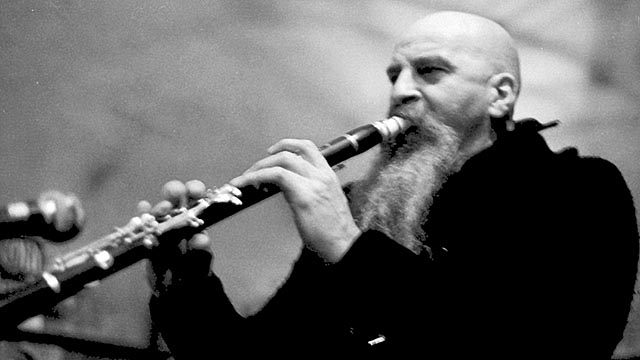|
1965: Clarinetist Tony Scott & "Music for Zen Meditation"
- How Japanese Music Became US "New Age" Music from Day One
US Clarinetist Tony Scott: How A Bebop Jazz Clarinetist Invented New Age Music


Left: Verve/Tony Scott's 1965 "Music for Zen Meditation" LP album
Right: Tony Scott, clarinet player, no date
"While in Japan, Scott also traveled widely in Asia, learning how to assimilate his jazz with music native to countries like the Philippines, Korea, Malaysia, Indonesia, and Thailand.
He played in a Hindu temple in Hong Kong. He explored the Balinese gamelan tradition and sought out Javanese harp and flute players.
He studied the traditional classical music of Japan, and read about Zen monks.
His study led him to the idea of doing a record specifically for meditation, because – at the time – there was only religious music and gagaku (Japanese court music) in the temples.
At this point, Scott’s outlook on his instrument shifted radically.
In America, jazz musicians were pushing the tempo faster. Scott slowed things down.
The shift was met warmly by some Japanese musicians, who were fascinated by Scott’s ability to play a clarinet in a style reminiscent of a shakuhachi flute.
Scott proposed recording with two Japanese masters: Hozan Yamamoto on the bamboo shakuhachi flute and Shinichi Yuize on koto, the 13-string plucked instrument.<
The trio improvised entirely on classical Japanese scales.
The music contained no song form or resolution – just a slow wrapping of flute and strings around the subtle lyrical line.
Because there is no instrument like the clarinet in Japanese folk music, Scott had to invent a voice for it
by closely matching the tonal qualities and breath patterns of Yamamoto’s shakuhachi playing."
Read more here, c/o the Discover Music website:
Tony Scott: How A Bebop Jazz Clarinetist Invented New Age Music
Now, did anyone in Japan, or in the US, mid-1960s, know anything about the 'Tani-ha' and Nishimura Kokū's 'Kyotaku' shakuhachi tradition,
or the Myōan Temple's 'Taizan-ha Suizen' way of practicing ascetic shakuhachi "self-cultivation" and "mental training"?
No, certainly not!
|
|


